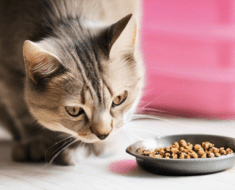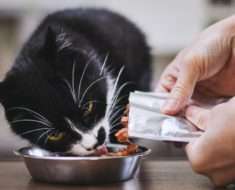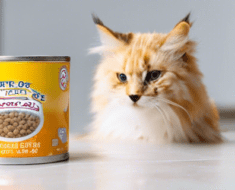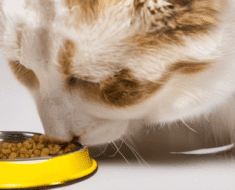Yes, you can put catnip in your cat’s food to enhance their mealtime experience. Catnip can be a wonderful addition to your cat’s food, providing them with a stimulating and enjoyable dining experience.
Catnip, also known as Nepeta cataria, is a natural herb that belongs to the mint family and is known for its attractive effects on cats. When ingested, catnip can induce playful and energetic behavior in cats, making their meals more exciting and engaging.
However, it’s important to use catnip sparingly and consult with your veterinarian before introducing it into your cat’s diet. This article will explore the benefits and considerations of adding catnip to your cat’s food, ensuring a delightful and safe dining experience for your furry friend.
Benefits Of Catnip
Attracting Cats: Catnip is known to have a strong attraction to cats. The active compound in catnip called nepetalactone stimulates the receptors in the cat’s nose, promoting playfulness and interaction.
Aiding Digestion: Catnip can also benefit your cat’s digestive system. When consumed, it stimulates saliva production which aids in the breakdown of food and improves digestion. It can also help relieve gastrointestinal discomfort.
Mood Enhancer: Catnip acts as a natural mood enhancer for cats. It can help alleviate stress, and anxiety, and promote relaxation. By exposing your cat to catnip, you can provide them with mental and emotional stimulation, promoting a healthy and balanced lifestyle.
Environmental Enrichment: Offering catnip to your cat can provide environmental enrichment. Cats enjoy the aromatic scent and playing with catnip-filled toys, which can prevent boredom and encourage exercise.
Not for All Cats: It is important to note that not all cats are affected by catnip. Approximately 50-75% of cats have a positive reaction to catnip, while others may have no response at all. It is always best to test your cat’s sensitivity to catnip before incorporating it into their diet or playtime activities.
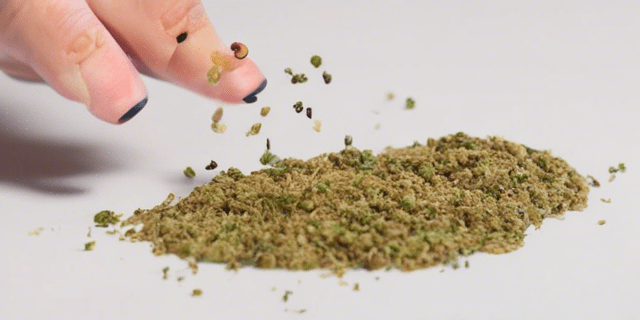
Potential Risks
Potential Risks:
Catnip is generally considered safe for cats and can provide them with enjoyment and relaxation. However, there are some potential risks associated with incorporating catnip into your cat’s food.
Digestive Upset:
Sometimes, cats may experience digestive upset after consuming catnip. This can manifest as diarrhea or vomiting. If you notice any of these symptoms in your cat, it’s important to consult your veterinarian for guidance.
Overstimulation:
While catnip can be an excellent source of entertainment for cats, it’s essential to monitor their behavior during and after exposure. Some cats may become overstimulated, displaying frenzied or hyperactive behavior. Keeping an eye on your cat’s reaction is important to ensure their well-being.
In conclusion, while catnip can offer many benefits for cats, including enrichment and stress relief, it’s crucial to be mindful of the potential risks. Monitoring your cat’s reaction and seeking veterinary advice if necessary are important steps in ensuring their safety and well-being.
Safe Ways To Use Catnip
When it comes to using catnip in your cat’s food, it’s important to do so in moderation. Adding a small amount of catnip to your cat’s food can provide some enjoyment without any harm. However, it’s important to ensure that the catnip being used is of high quality and safe for consumption. Additionally, using catnip toys can be a safer way to provide enjoyment for your cat without the risk of ingestion. Remember to always monitor your cat’s reaction to catnip and discontinue use if any adverse effects are observed.
Alternatives To Catnip
Looking to provide your cat with something new and exciting? There are various alternatives to catnip that your feline friend might enjoy. Some options include silver vine, valerian root, and honeysuckle. These alternatives can be sprinkled on top of your cat’s food or rubbed on their favorite toys for added enjoyment.
| Valerian Root | Silver Vine |
| Valerian root can provide a similar effect to catnip for some cats. | Silvervine is a potent alternative that can excite cats even more. |
Consulting A Vet
Catnip can be a fun addition to your cat’s playtime, but when it comes to putting it in their food, it’s best to consult a vet for guidance. They can advise on the appropriate use and potential effects on your feline friend’s health.
| Consulting a Vet | Subheading: Seeking Professional Advice |
| Always consult a vet before introducing any new elements into your cat’s diet. | Seek professional advice to ensure the safety and suitability of catnip for your pet. |
| Monitoring Cat’s Response | |
| Observe your cat’s behavior and reactions after consuming food with catnip. | Monitor any changes or unusual symptoms and seek veterinary guidance if needed. |
Frequently Asked Questions Of Can I Put Catnip In My Cat Food
How Much Catnip Should I Put In My Cat’s Food?
Add a pinch of catnip to your cat’s food for a delightful treat. But remember, moderation is key. Too much catnip can make your feline friend hyperactive or even upset their stomach.
Are Cats Supposed To Eat Catnip Or Just Smell It?
Cats can both eat and smell catnip. When ingested, it can cause a temporary behavioral change. While not harmful, moderation is key.
How Do You Give Your Cat Catnip?
To give your cat catnip, simply sprinkle a small amount on their toys or scratching post. Watch them enjoy!
Can I Put Catnip In My Cats Water?
No, it’s not recommended to put catnip in your cat’s water. Catnip is best given as a treat or sprinkled on toys.
Can Catnip Be Safely Mixed With Cat Food?
Yes, it’s safe in moderation and can add variety to their diet. Cat’s response to it may vary.
Conclusion
Incorporating catnip into your cat’s food can provide them with a variety of benefits. From reducing stress to promoting exercise and mental stimulation, catnip can be a valuable addition to their diet. However, it’s important to use catnip in moderation and consult your vet to ensure it’s safe for your feline companion.
By considering your cat’s well-being and the potential perks of catnip, you can make an informed decision about incorporating it into their meals.

